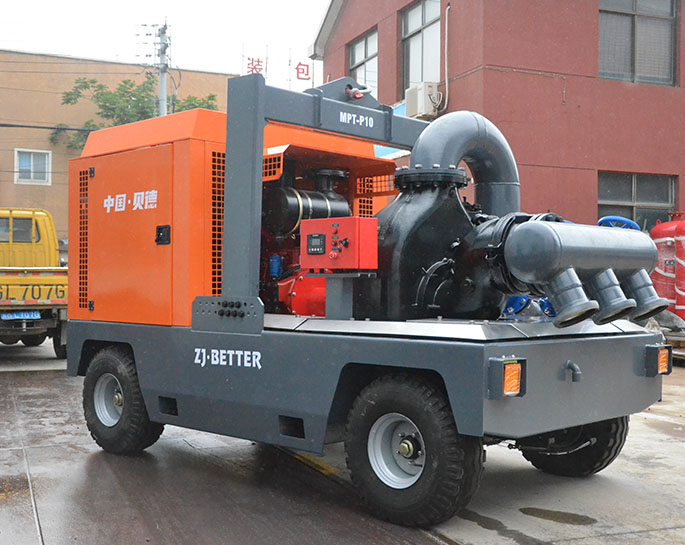Before starting a mobile pump truck, you should undertake a series of preparations to ensure the safety of the operators, the equipment, and the efficiency of the pumping process. Here are the key preparations you should follow:
Safety Check:
a. Inspect the overall condition of the mobile pump truck, including the chassis, pump, and all components. Ensure there are no visible defects, damage, or leaks.
b. Check the tires for proper inflation and any signs of wear or damage.
c. Ensure all safety guards, covers, and access doors are in place and functioning correctly.
d. Verify that all warning and safety labels are clearly visible and legible.
Fluid Levels:
a. Check and maintain the appropriate levels of fuel, hydraulic fluid, and engine oil to ensure smooth operation.
b. Inspect the hydraulic system for any leaks or anomalies, as maintaining hydraulic fluid levels is particularly important for pump trucks.
Electrical Systems:
a. Ensure that the electrical system, including lights and emergency stop buttons, is functioning correctly.
b. Check that the battery is charged, and verify the integrity of all electrical connections.
Operational Controls:
a. Familiarize yourself or your operators with the control panel and operational controls of the mobile pump truck. Understand how to start and stop the pump, adjust the flow, and control the boom (if applicable).
b. Ensure all control levers and switches are in their neutral or off positions before starting the engine.
Site Preparation:
a. Ensure the work area is clear of obstacles, debris, and personnel who are not involved in the operation.
b. Set up barriers or warning signs to prevent unauthorized access to the work area.
c. Plan the positioning of the pump truck to ensure it can reach the required areas without overextension.
Safety Gear:
a. Ensure that operators are wearing the necessary personal protective equipment (PPE), including hard hats, gloves, high-visibility vests, and any other required safety gear.
b. If the work involves concrete or other materials that can be hazardous to the eyes or skin, ensure that operators have appropriate eye protection and clothing.
Emergency Procedures:
a. Review emergency procedures with the operators, including how to shut down the pump truck in case of an emergency or equipment malfunction.
b. Ensure that fire extinguishers and first-aid kits are readily accessible.
Operator Training:
a. Confirm that the operator of the mobile pump truck is properly trained and certified for its operation.
b. Verify that the operator understands safe operating practices and is familiar with the manufacturer's guidelines.
Weather Considerations:
a. Take into account weather conditions, such as rain, wind, or extreme temperatures, which can impact the safety and operation of the pump truck.
b. Make adjustments to the operation or reschedule if necessary to ensure safe working conditions.
Communication:
a. Establish clear communication protocols between the operator and any ground personnel or spotters if required.
b. Ensure that everyone involved in the operation knows how to communicate effectively.
Equipment Manuals:
a. Keep the equipment manuals and documentation on hand for quick reference, especially if troubleshooting or maintenance is required.
Startup Procedure:
a. Follow the manufacturer's recommended startup procedure for the mobile pump truck, which may include specific steps for priming the pump.
By thoroughly preparing and following these steps, you can ensure the safe and efficient operation of a mobile pump truck. Always prioritize safety and adhere to best practices for heavy equipment operation. Additionally, consult the manufacturer's guidelines and recommendations specific to your mobile pump truck model.



